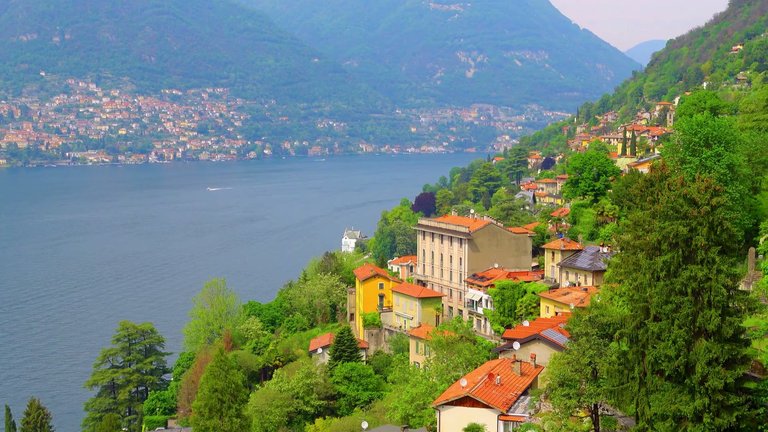
Hello friends, today I’d like to share my journey to the city of Como and the towns of Brunate and Blevio. The small historic train station from which Como gets its name is located almost right on the shore. So despite the noise of cars, the holiday atmosphere is felt immediately. This year extensive reconstruction work is underway along the shoreline. Hopefully, by next year we’ll see a renewed and blooming lakeside.
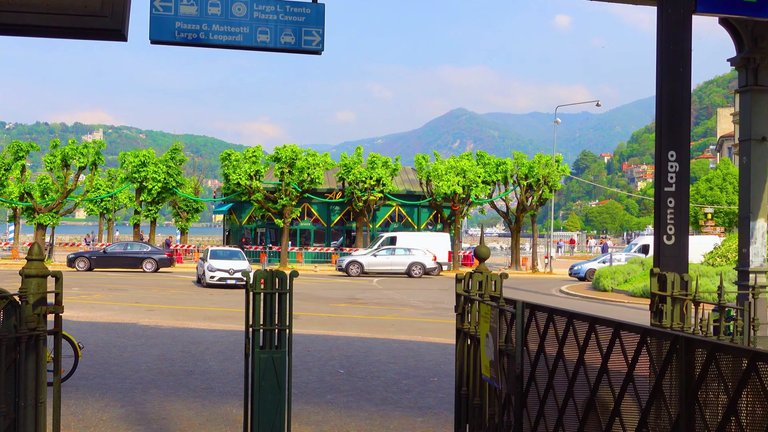
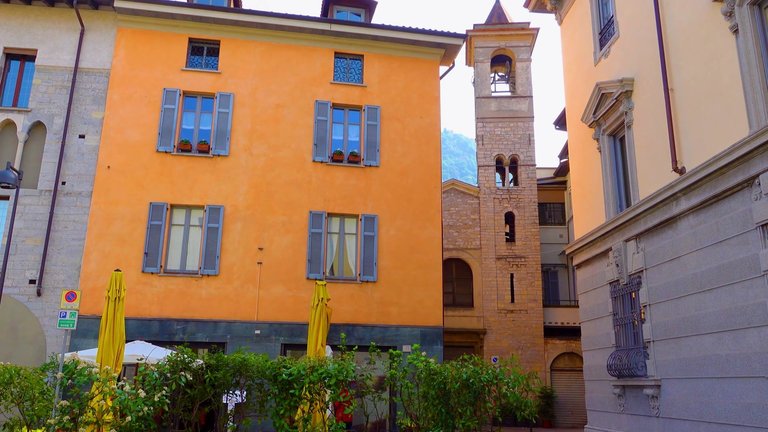
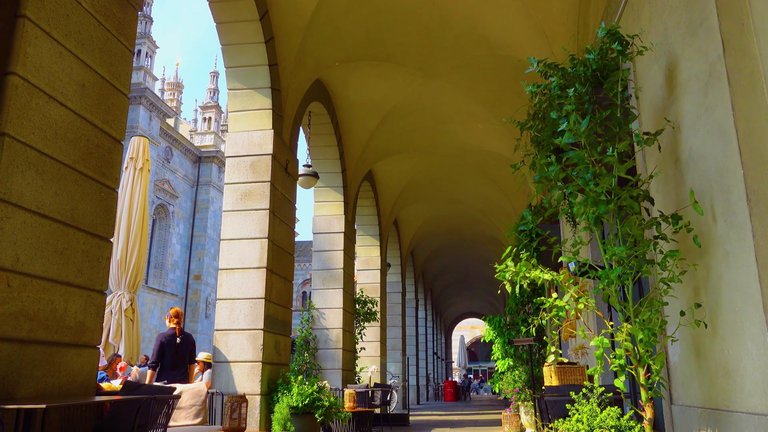
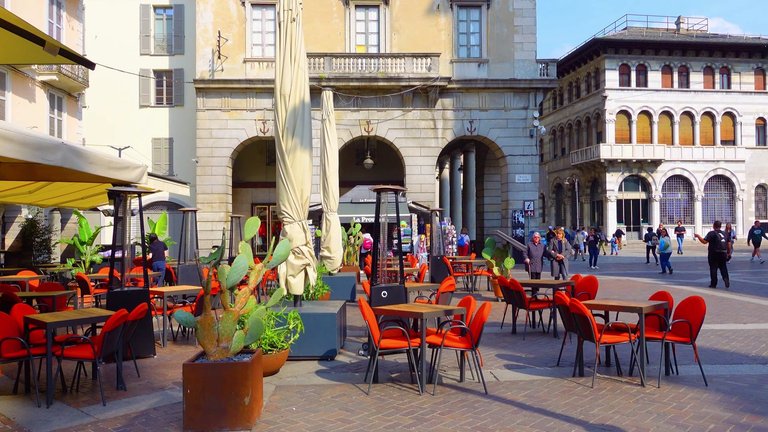
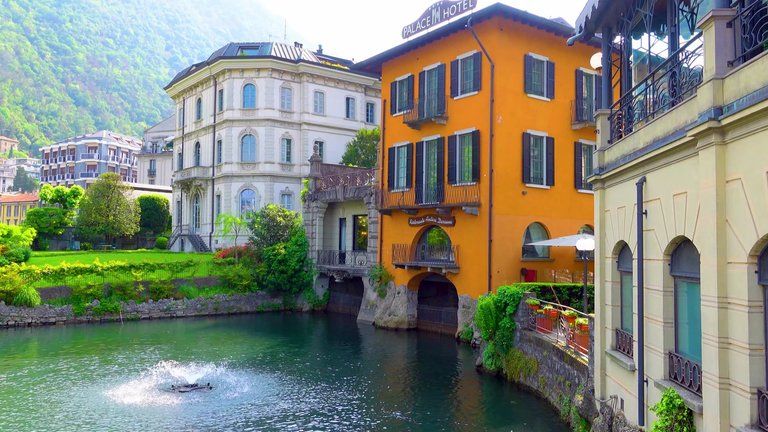
I didn’t plan to spend much time here, but I couldn’t resist stopping by the square where the main cathedral of Como is located. There’s always a lively atmosphere here, even in winter. But I particularly enjoy it when the bridge is illuminated by sunlight and boxes adorned with giant cacti and palm trees are placed between the tables. This magnificent cathedral had an almost 350 year long construction process. Generations of stonemasons, workers and sculptors changed hands before its completion in 1990. That year a powerful lightning strike hit the cathedral’s façade, dislodging a heavy marble block from a height of 50 meters. Luckily no one was hurt. Afterward emergency inspections revealed that parts of the structure had weakened and careful restoration began.
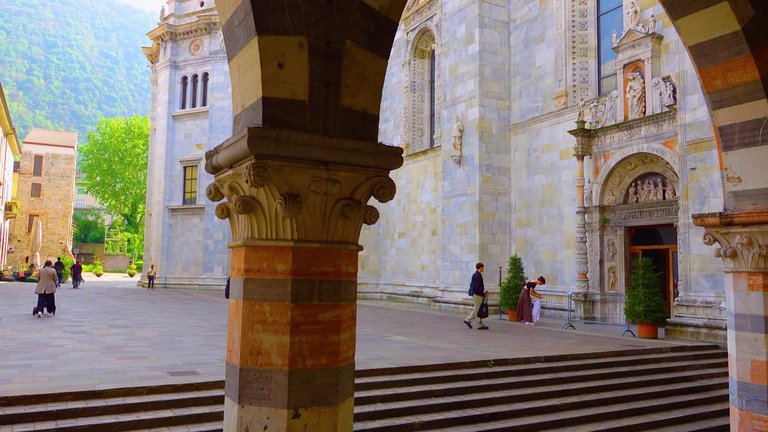
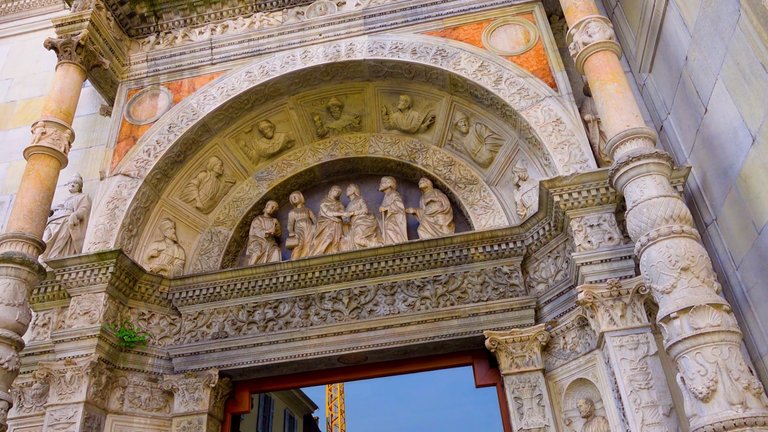
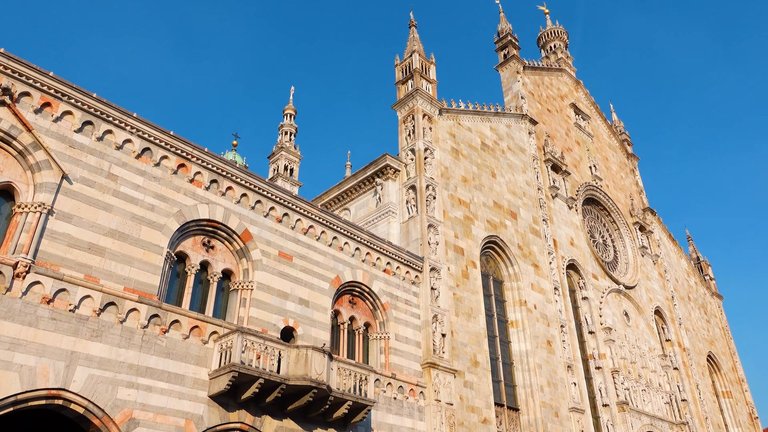
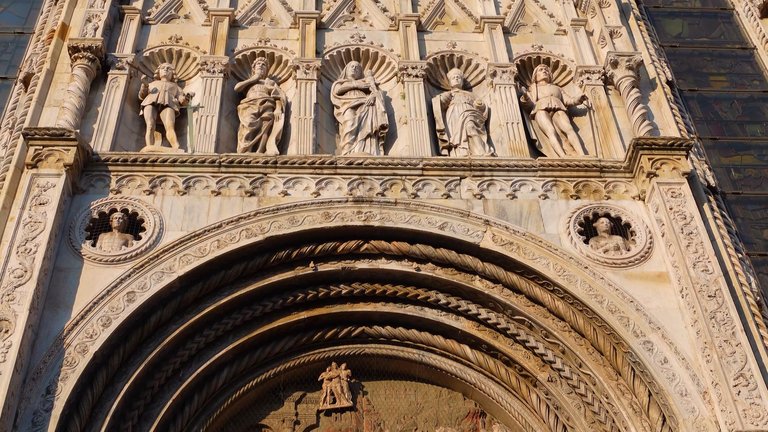
Como is an important city with a rich history. Once the construction work is complete, I’d like to return and share how the cathedral looks in all its glory. My journey then continued along the right bank, toward the foothills of the green mountains.
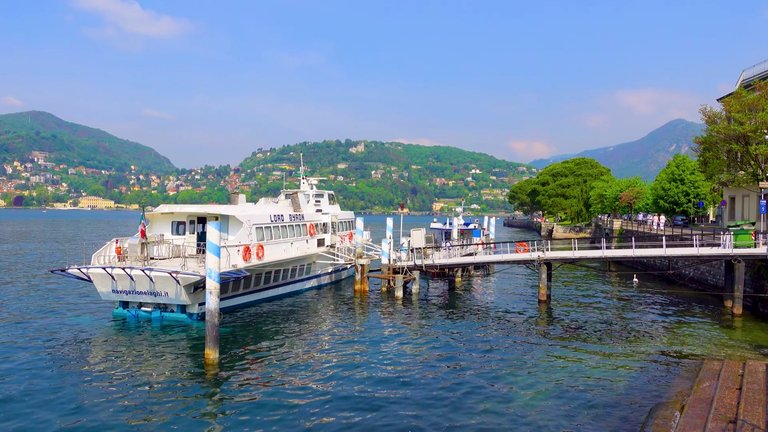
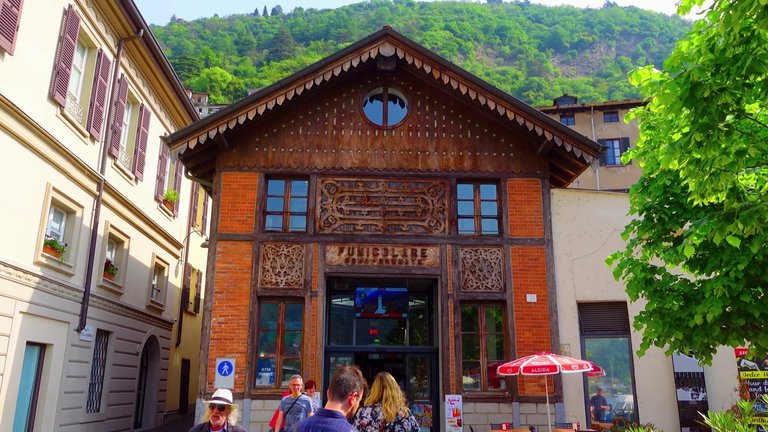
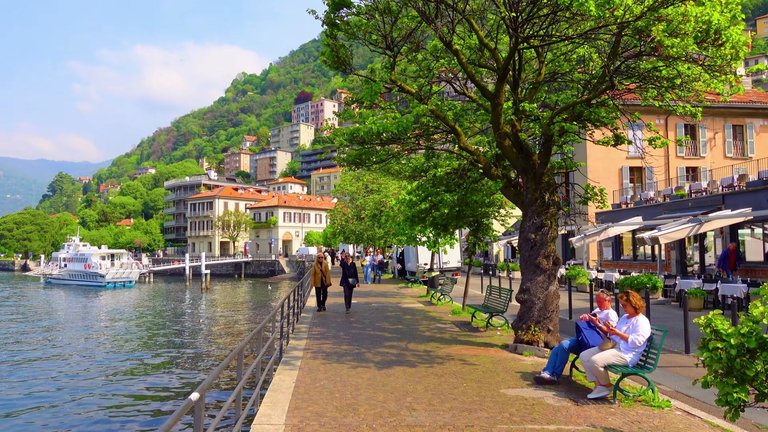
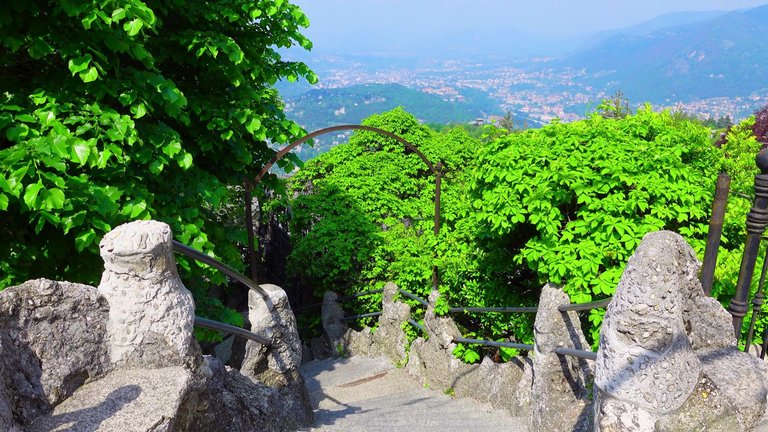
I didn’t spend much time in Como in the morning and instead took the funicular to the town of Brunate. There’s an old funicular here that dates back to the late 19th century. The first carriages operated using gravity, later replaced by electric motors. From here, at an elevation of 500 meters, the views are spectacular. The Como-Brunate line currently operates two carriages: one red, the other purple. Each runs every 15 minutes from 6 am to midnight.
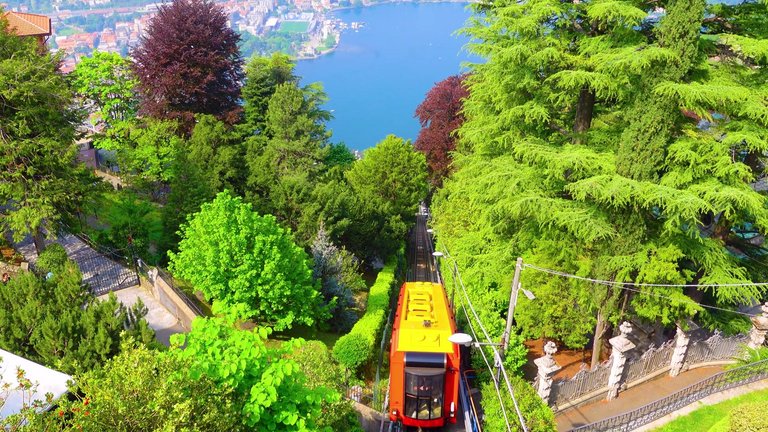
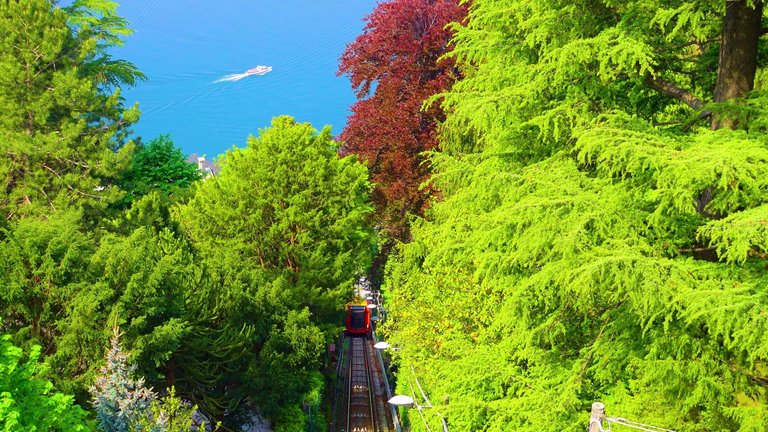
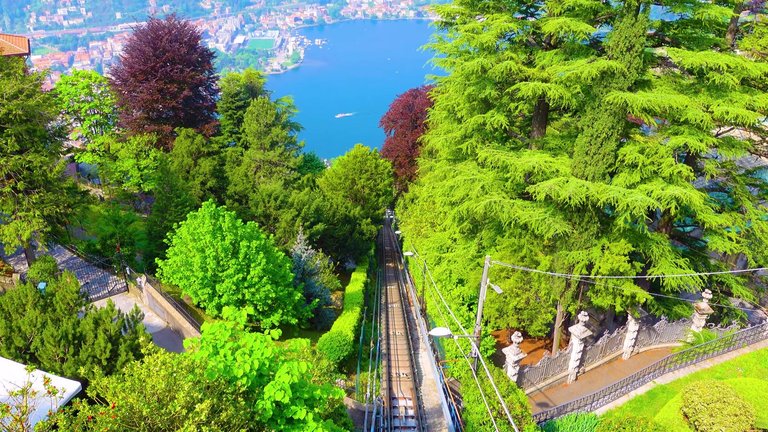
Alternatively there’s a steep and rocky hiking trail that takes at least an hour to climb. There’s also a narrow, winding road approximately 8 kilometers long. For this reason, the fast funicular is not just a fun attraction but also a necessity. Brunate is a charming place, but it carries a slightly melancholic air. Rapid development was followed by an equally rapid decline. When easy access was established between Como and Brunate, the aristocracy of the time flocked here.
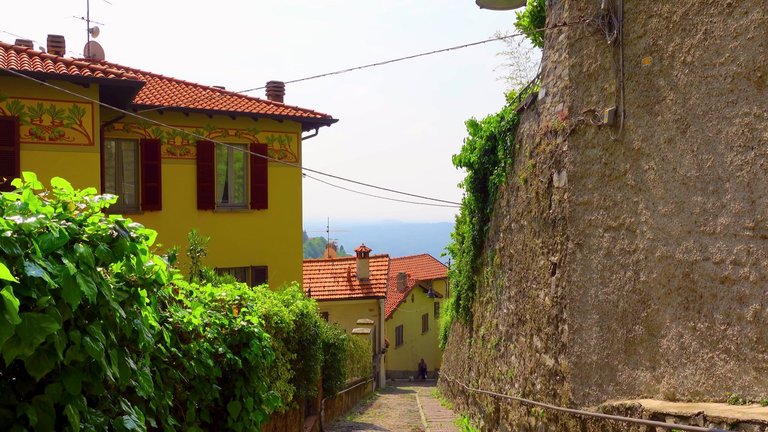
Solitude, fresh air, panoramic views... what more could one want to escape the city noise? And grand hotels, a five-story Grand Hotel and even a casino were built here. However, in the second half of the 20th century, tourism trends shifted and luxury hotels began to empty and close. Now you mostly encounter backpackers or visitors from Como taking the funicular to spend a few hours cooling off. Some of the villas here are up for sale, with prices ranging from 1.5 million to 20 million euros. In the early 20th century some of the best architects and decorators of the time worked on these homes. Behind the houses you’ll find hidden swimming pools, sculpture pathways and landscaped gardens. Some owners went beyond the limits of the Liberty style, designing exotic and eclectic buildings. Of course, outside of these elegant streets, there are also ordinary houses in the town.
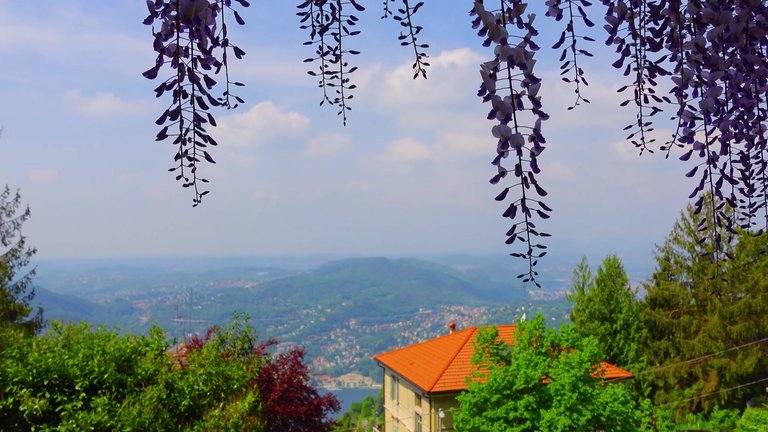
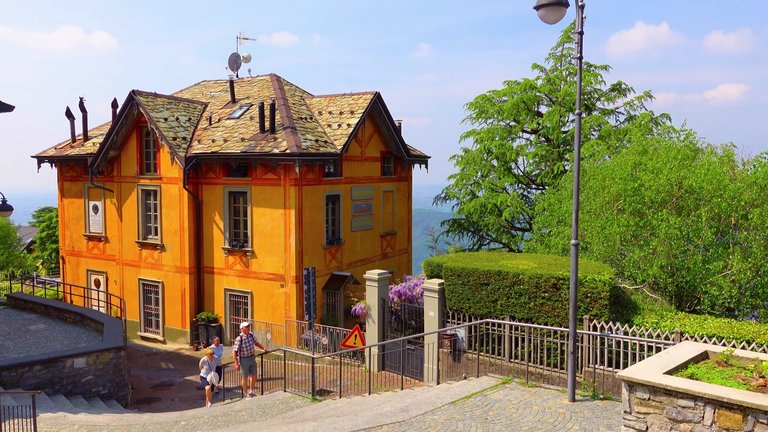
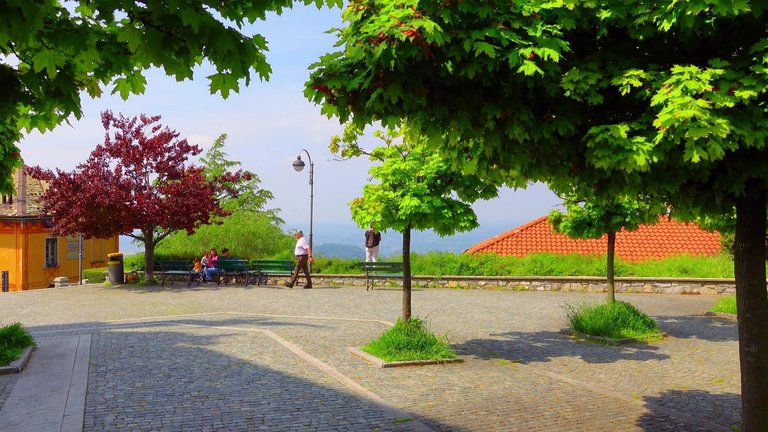
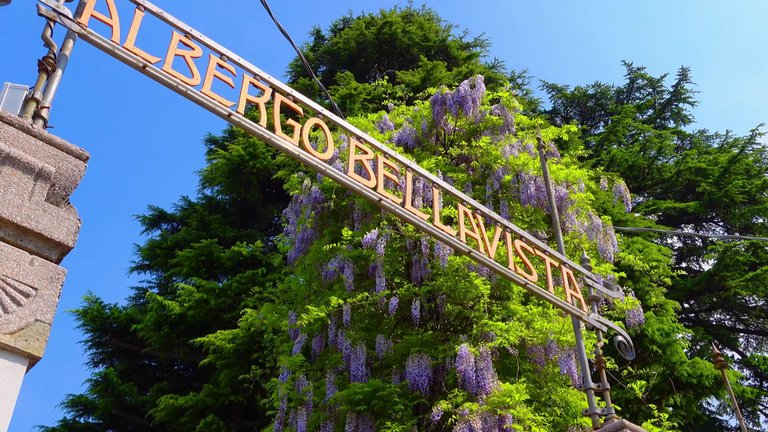
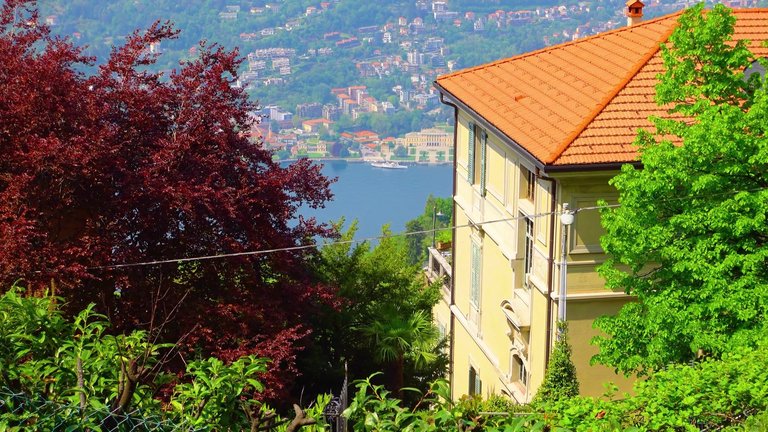
Brunate also features a large sports complex, including a football field and tennis courts. There’s also a modern library and daycare centers. The school here remains only for primary education, so the government covers the funicular transportation costs for students who have to attend schools below. In the summer to avoid waiting in long lines with tourists, town residents can pass through a separate turnstile without waiting.
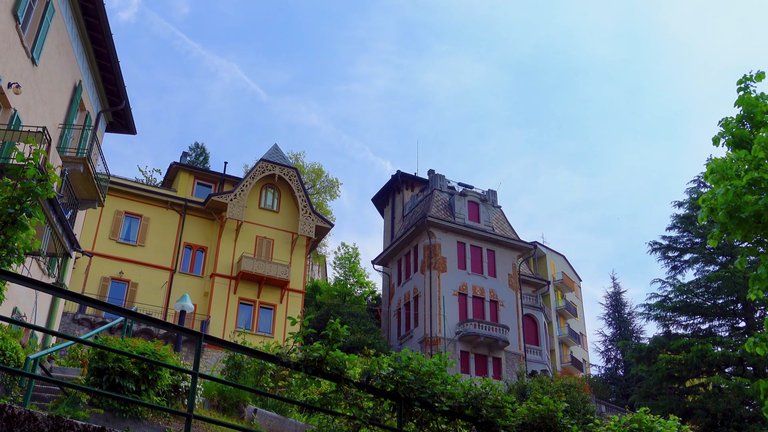
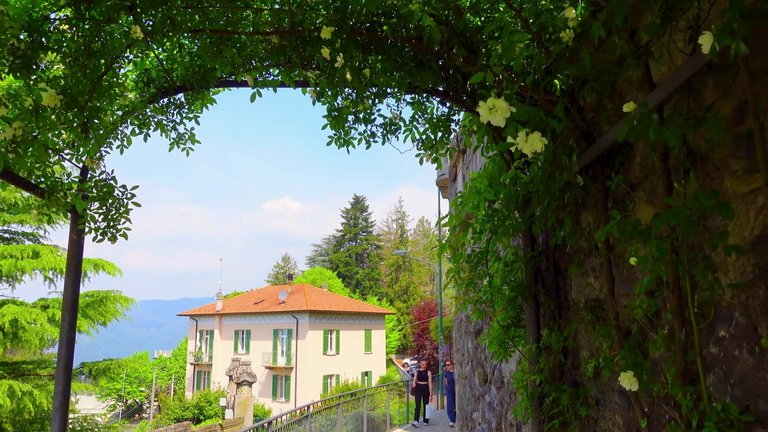
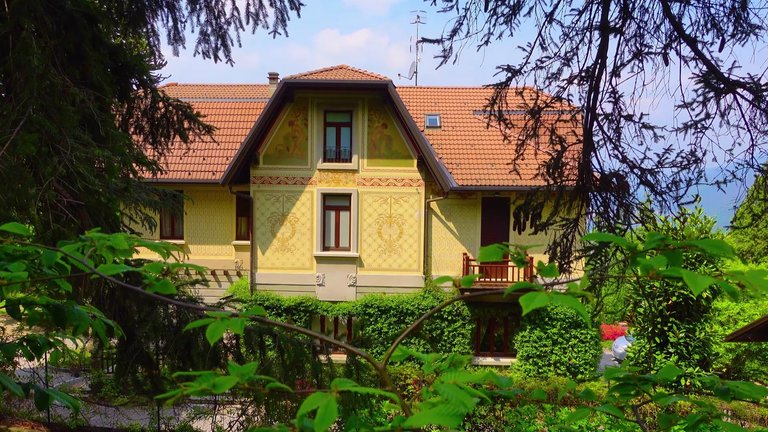
In the 14th century the Monastery of Saint Andrew was established here. At that time, this area was one of the most remote places. There were no roads or proper trails. However, this natural isolation protected the town from many civil wars in Italy during that era. The land here was very fertile and various vegetables were grown on artificial terraces. Strangely though, potatoes were not favored as the local soil wasn’t suitable for them. Dense deciduous forests supported woodcraft and carpenters crafted doors, windows and various furniture. In the 17th century Italian scientists invented the barometer and local craftsmen became so skilled in making these devices that their expertise was sought from other countries. Eventually all the skilled craftsmen of Brunate left the town.
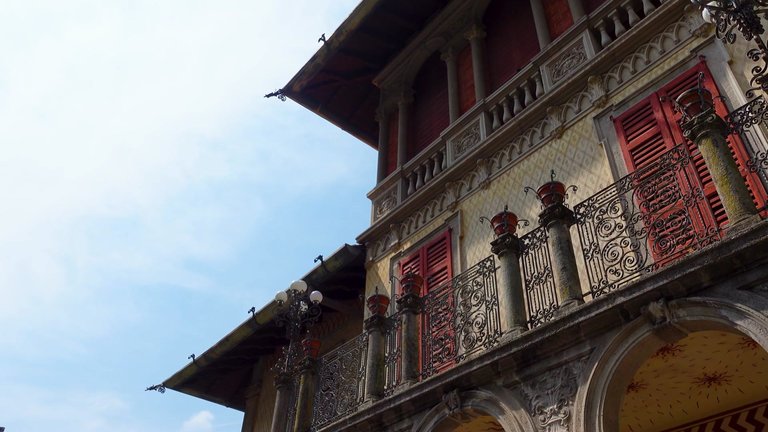
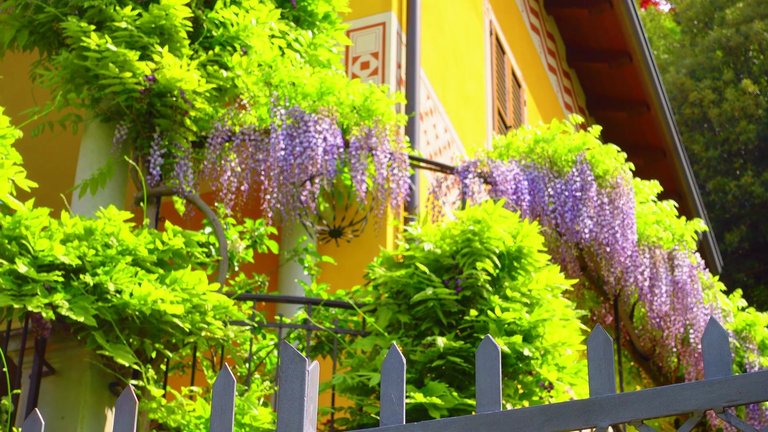
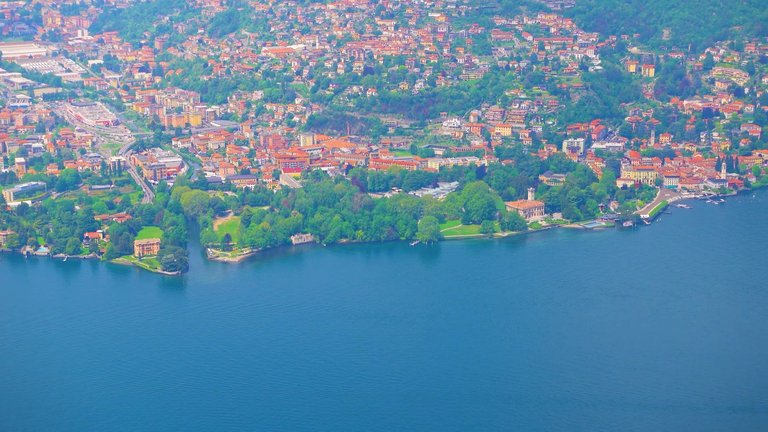
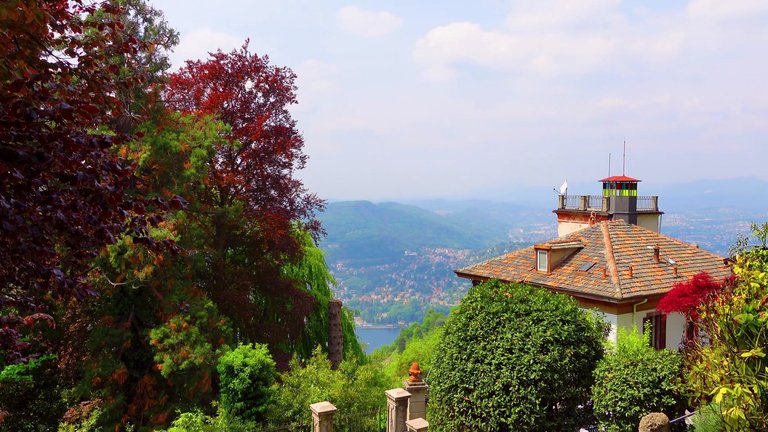
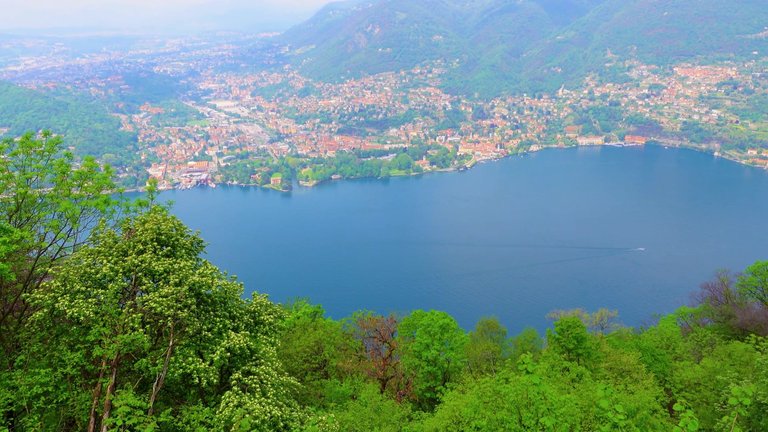
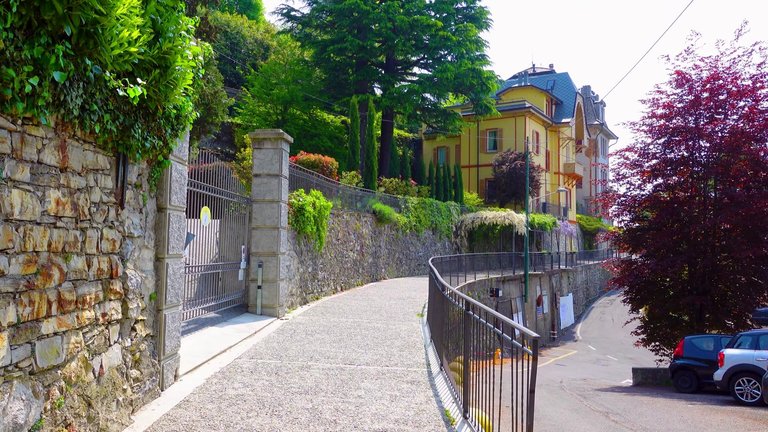
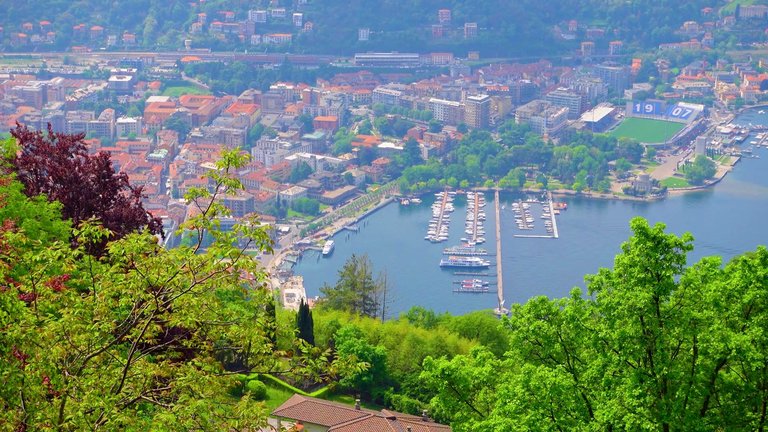
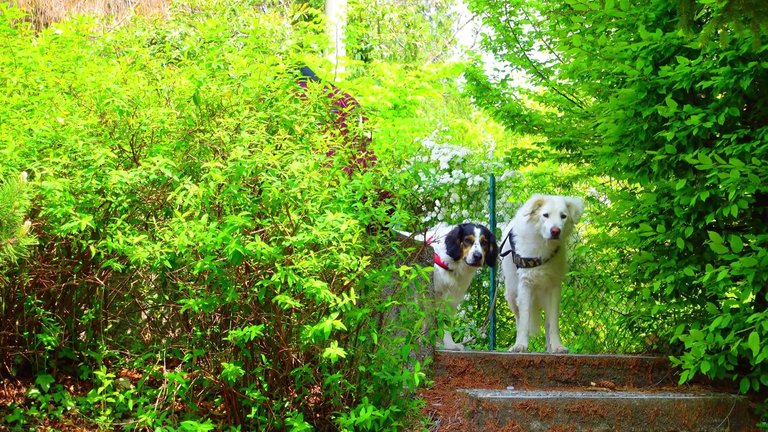
The largest church in town, in a soft peach color, is dedicated to Saint Andrew adorned with angel figures and elegant decorations. Inside there’s an old organ and frescoes. While expanding the old structures, the most valuable elements were preserved. The ceiling paintings are quite modern, but the 15th-century fresco is the oldest. It is now surrounded by a striking marble frame and the differences in style and human figures are immediately noticeable. The lighting is meticulously done, carefully highlighting important details, almost as if telling a story.
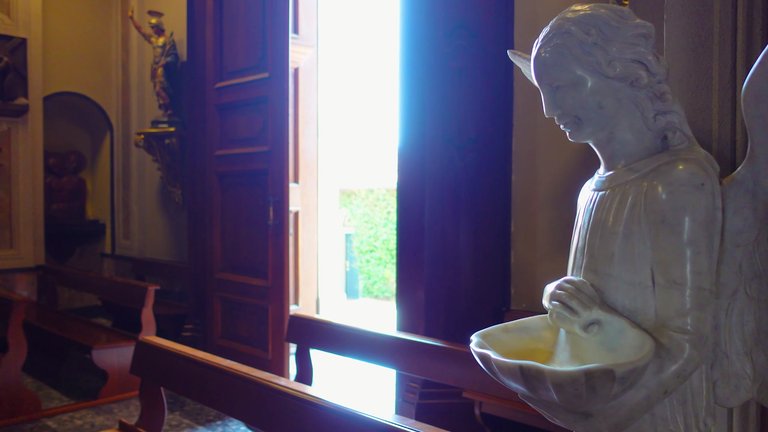
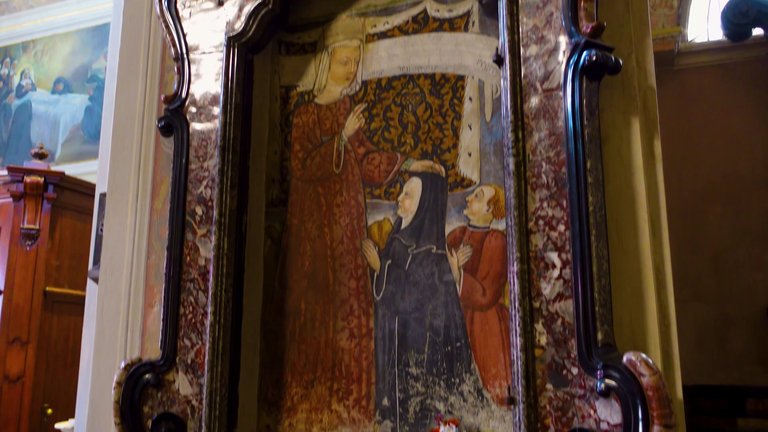
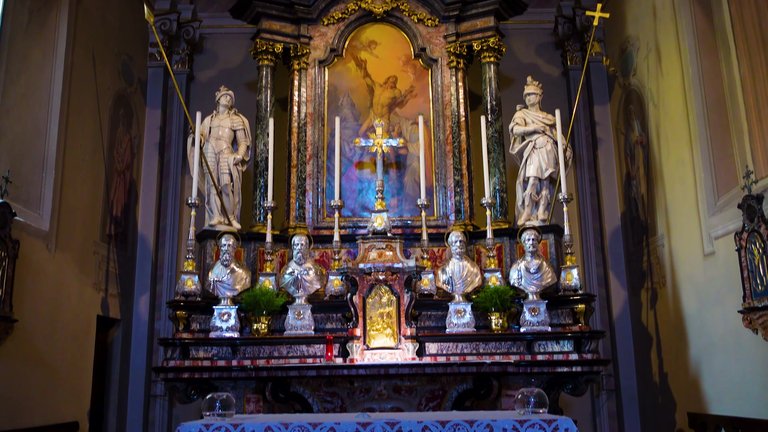
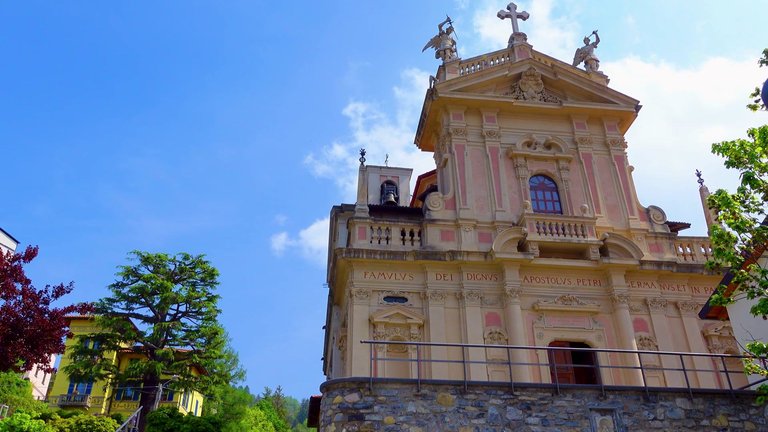
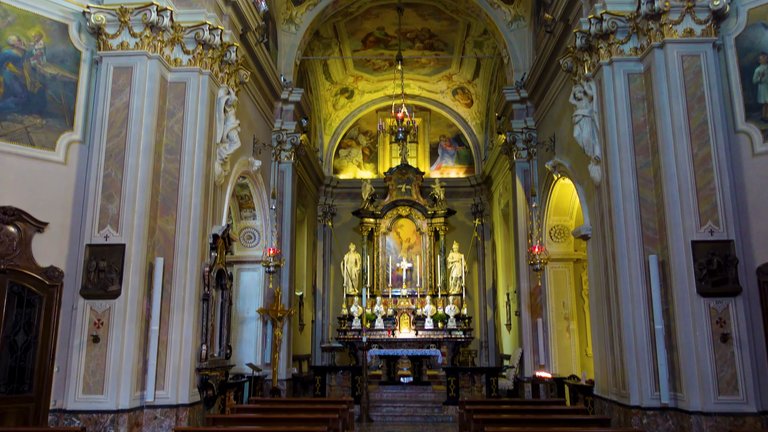
Raising our eyes, we saw the 200 year old organ decorated with statues of two saints opposite the altar. The closed door reminded me that I needed to continue my journey. From Brunate, you can reach several viewing terraces. We stopped at the nearest one. If you climb higher, you’ll see the lighthouse dedicated to Alessandro Volta, which glows at night in the colors of the Italian flag. Interestingly someone here has even built their own private funicular.
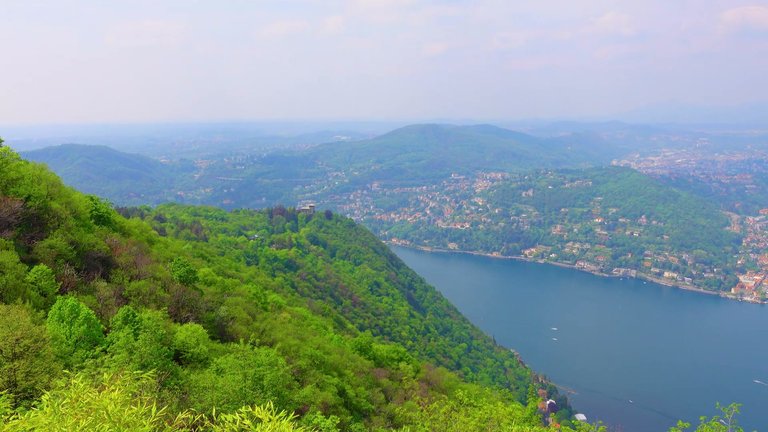
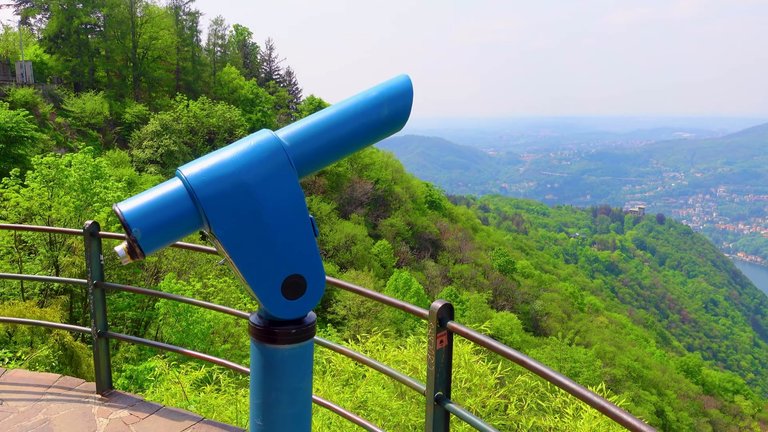
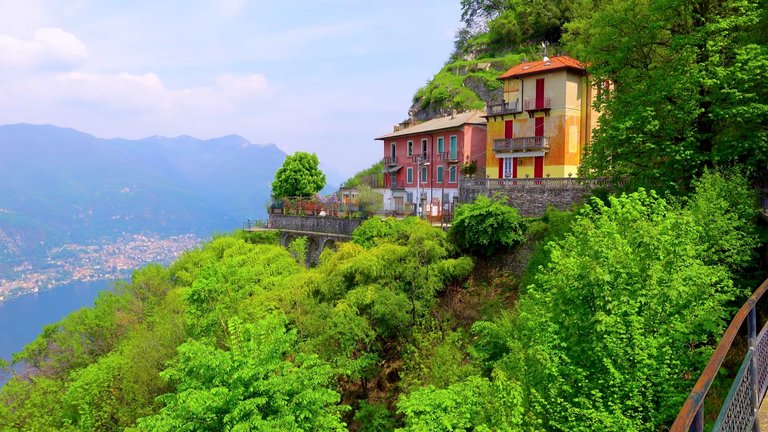
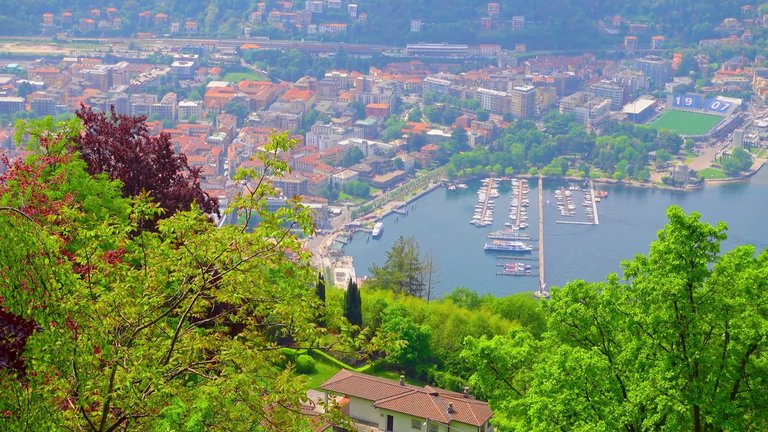
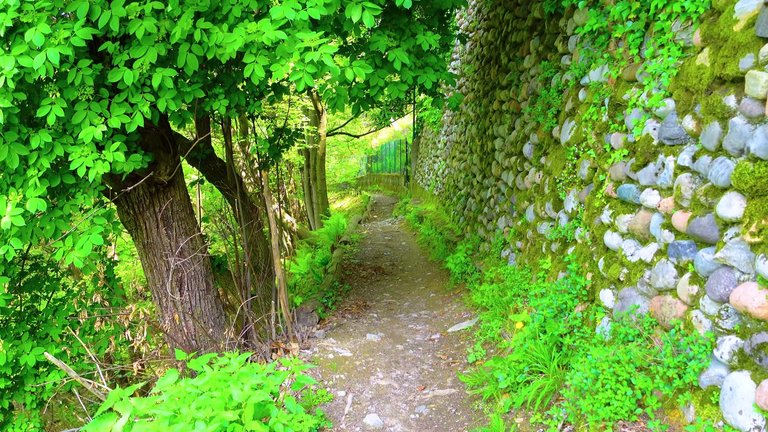
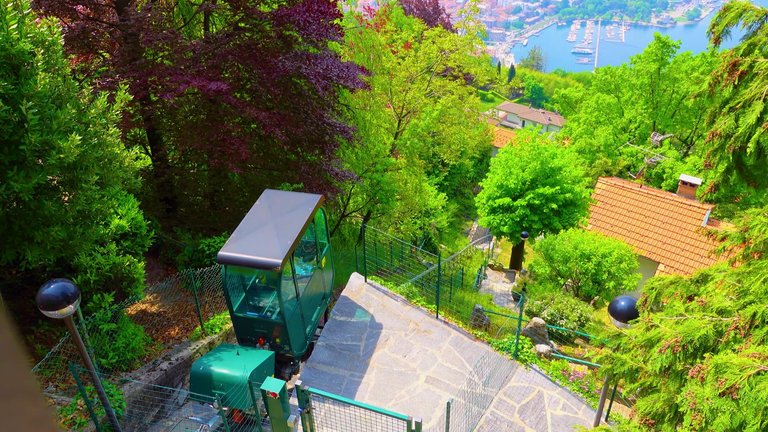
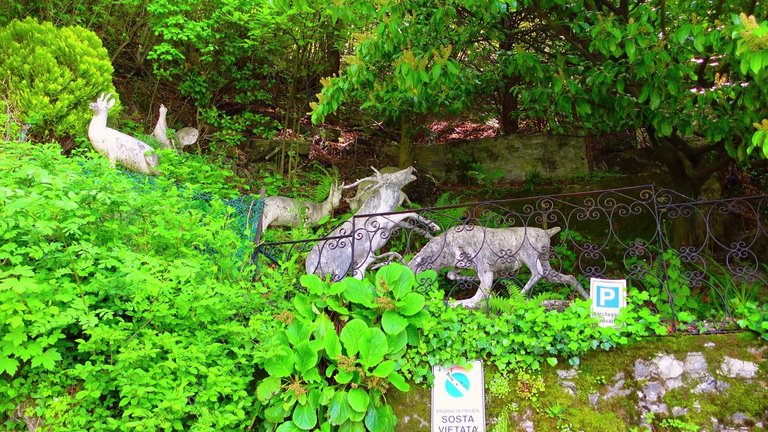
After passing two more places, I ended my journey in another town. New wonderful places awaited us. I walked along the old road under the shade of trees. The old Viareggio Road, also called the Royal Road doesn’t refer to a route taken by royalty but rather one built with the king’s funds. This path, connecting Como to Bellagio, passed through villages overlooking the right bank. Pope Urban II likely traveled this path for the first time when heading to participate in the Crusade. Alongside it there’s a steep area bordered by metal poles.
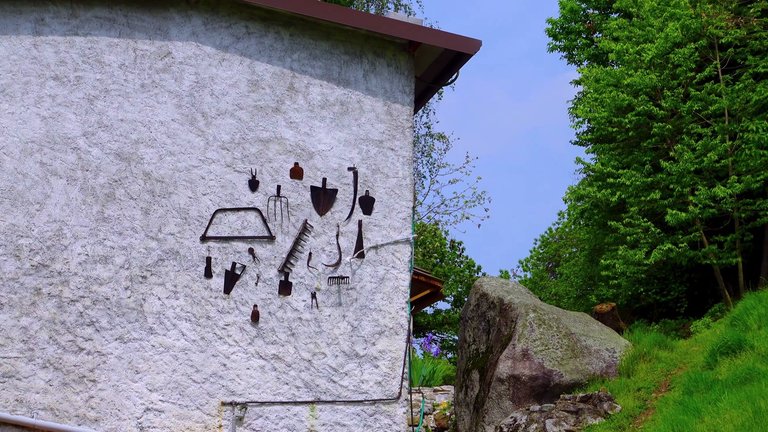
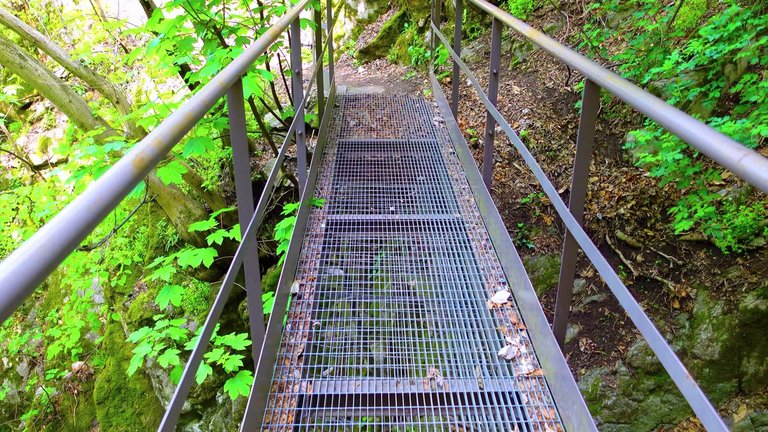
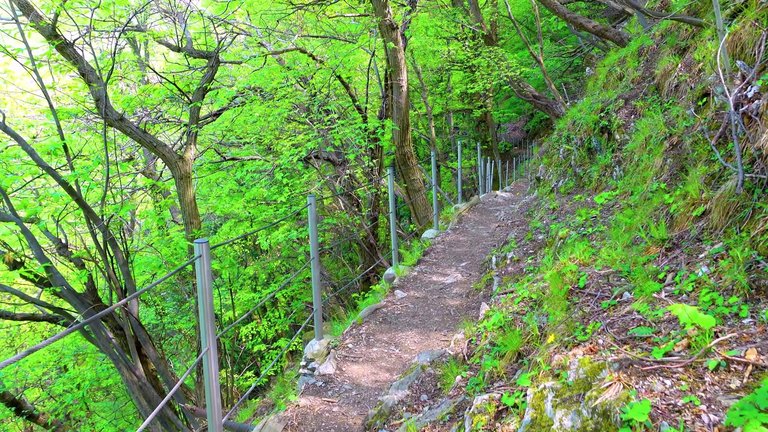
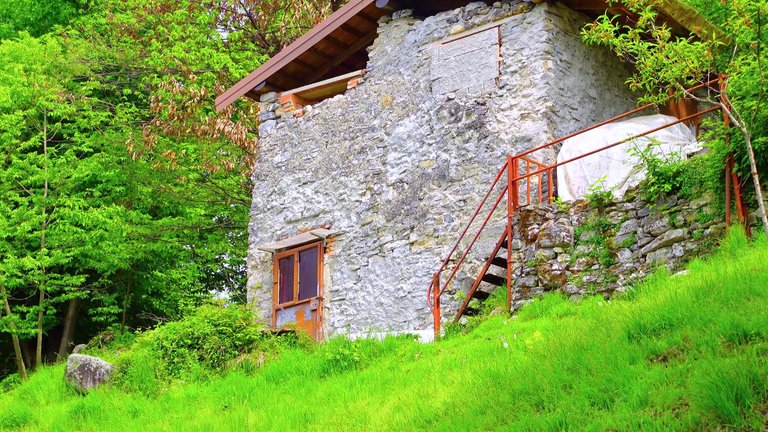
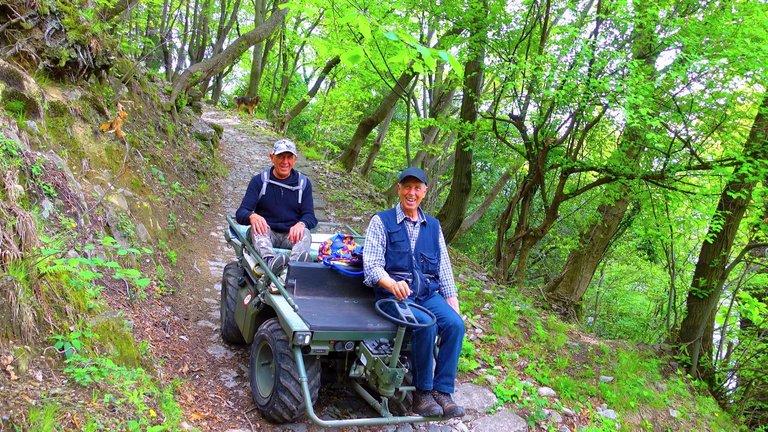
I tried to imagine how they might have crossed this passage, especially when water gushed down like waterfalls from the melting snow in the mountains. They must have had to cross using a simple log. This path is also called The Donkey’s Path because pack animals were used for road transport for centuries. Donkeys eat little, get sick less often, live longer and can climb mountains for up to eight hours. Thankfully these lovely animals are no longer expected to bear such burdens today.
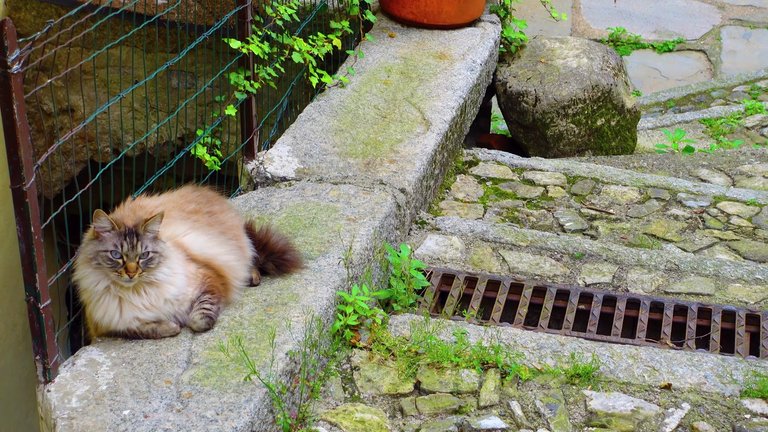
The landslide warning signs seemed almost humorous on a sunny, hot day. But landslides in these areas, sometimes quite destructive, are far from rare.
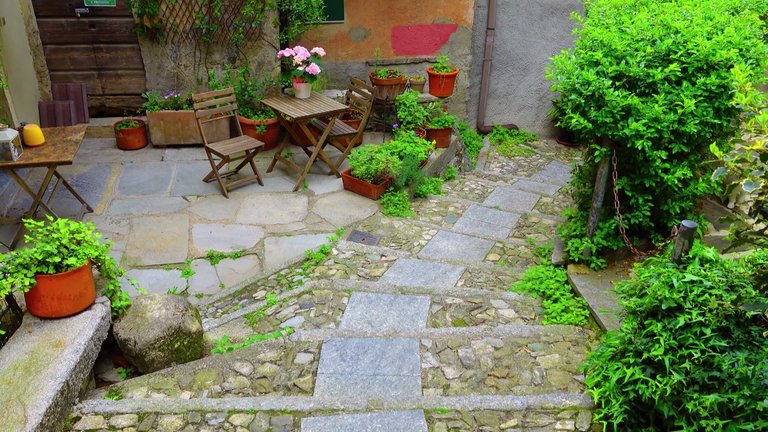
The lake appeared slightly hazy, perhaps due to the sudden rise in temperature. Yet, even in such weather I could clearly see each villa, garden and the small boats on the opposite shore. What I particularly enjoy is wondering who might live in such isolated places and how they get there.
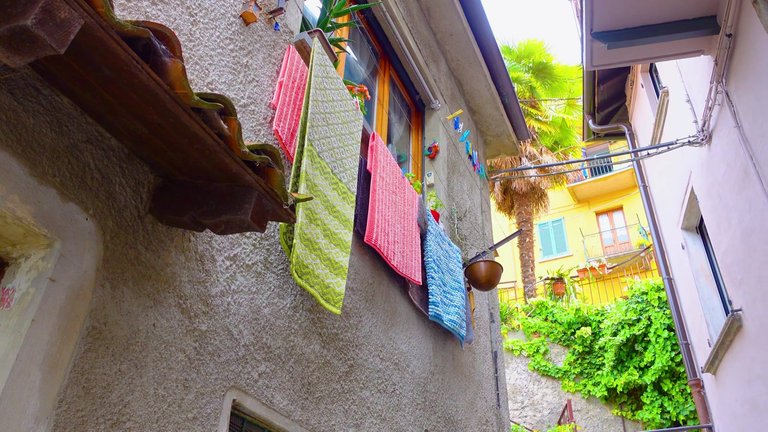
We arrived at the town of Blevio. This town consists of seven villages located on the slopes of Mount Baleta, built to follow the mountain's incline. In such places using a map is hardly practical. A navigator likely won’t pinpoint the correct spot and besides, it’s far more exciting to step forward with curiosity, wondering where the next step will lead. Observing local life is fascinating.
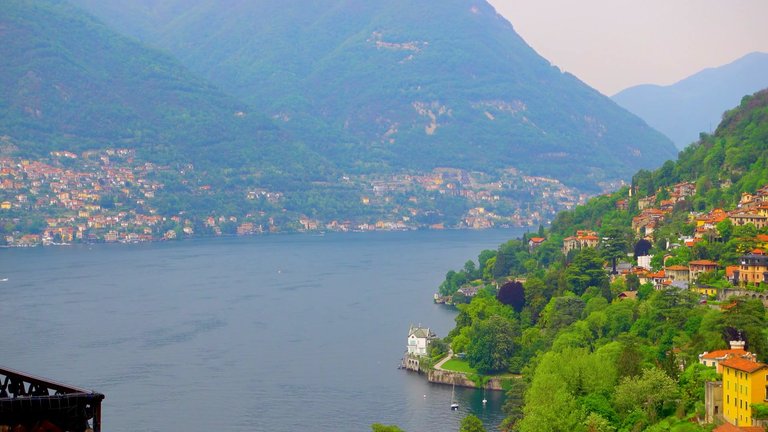
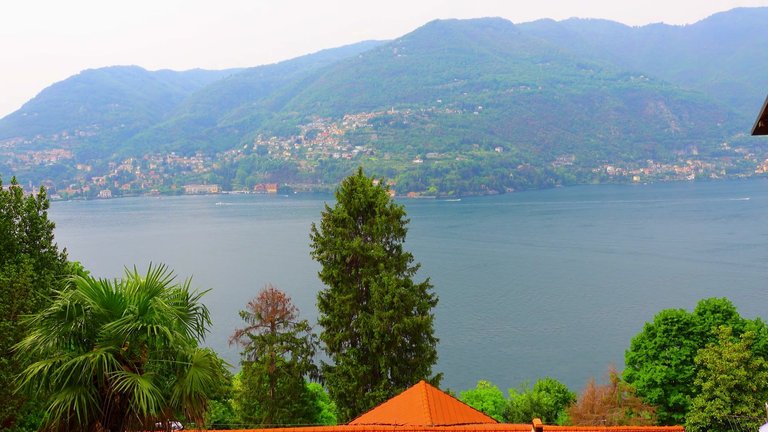
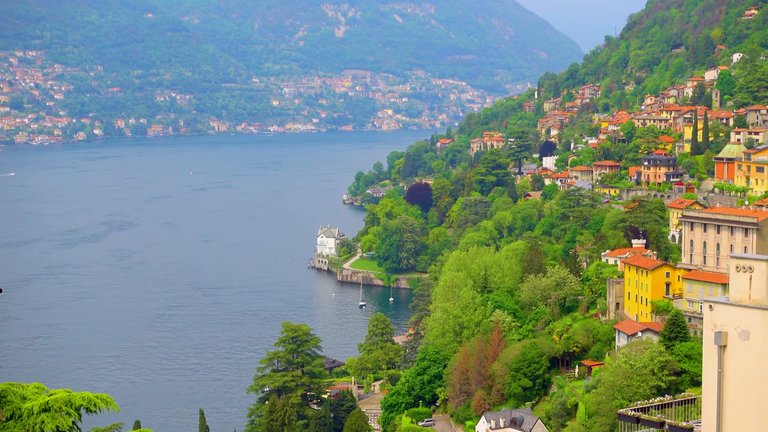
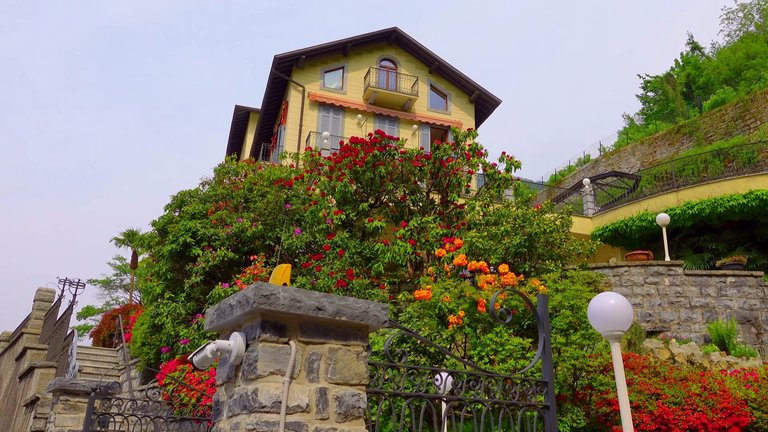
Here there are almost no abandoned houses. Even if the streets are empty, conversations drift from open windows and doors. The variety of plants in pots and the charming decorations on the walls show how much care the locals put into their homes. The name Blevio comes from the Celtic language, meaning lively. The first settlements here date back at least three and a half millennia.

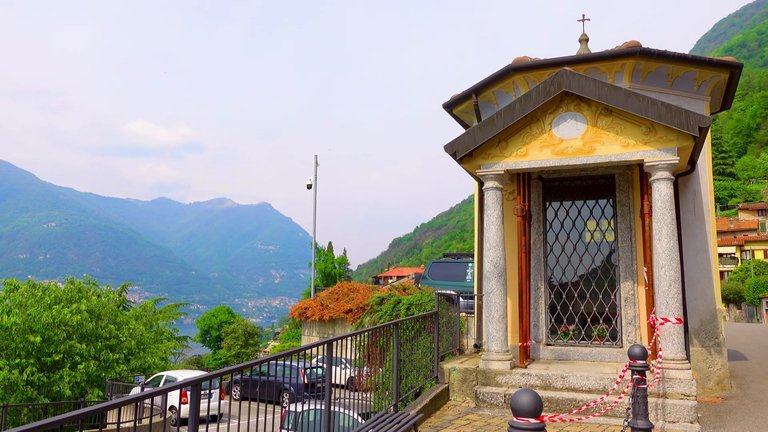
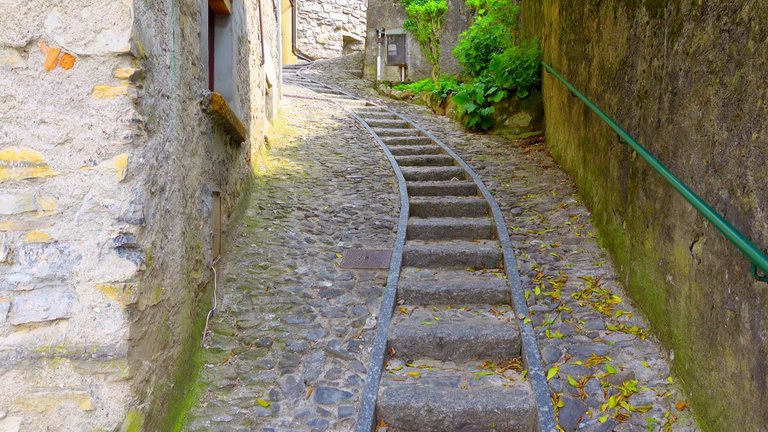
While the homes and streets in the upper villages are tightly packed, as you descend towards the lake, the scenery becomes more serene and countless villas appear. Poets and writers seem to have been enchanted by this sunny town and its scenic village on the southern side of the lake.
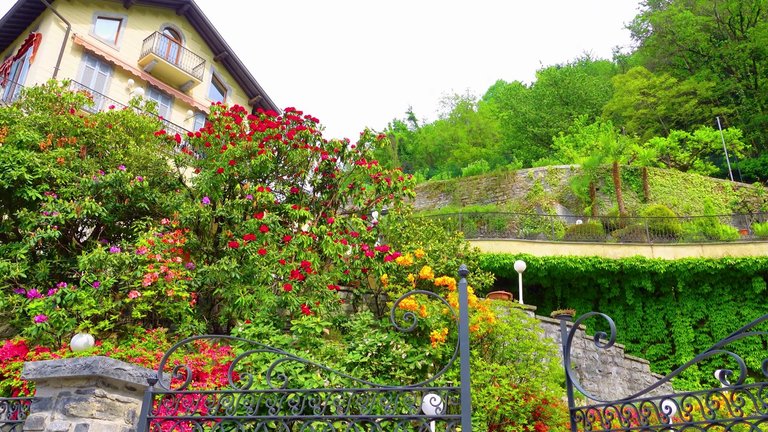
On the shore stands Villa Veloprötti, built in the early 19th century by a Count. After his wife’s death, he sold the villa to an Italian writer and decided to become a priest to work toward unity between Catholics and Orthodox Christians. Every village in this area holds countless stories and legends. For instance, nearby, among large stones and rocks, tales of witches, devils and goblins abound.

Regarding such stories, the Inquisition in Como tried over 300 witches and sorcerers in the 15th century, accusing them of devil worship. Hopefully, these are just frightening legends. Another legend claims that the massive rocks in the area were meteors thrown down as gifts from the gods, which the villagers used to build sacred structures.

Let me tell you more about witches. There’s a ghost in the region that is said to appear from time to time. It belongs to Judith Pasta, a famous opera singer of the 18th century. On the opposite shore lived a passionate admirer, a composer, who would come here, waiting in hope to catch a glimpse of his beloved. Recently someone claimed to have seen the singer’s ghost again.
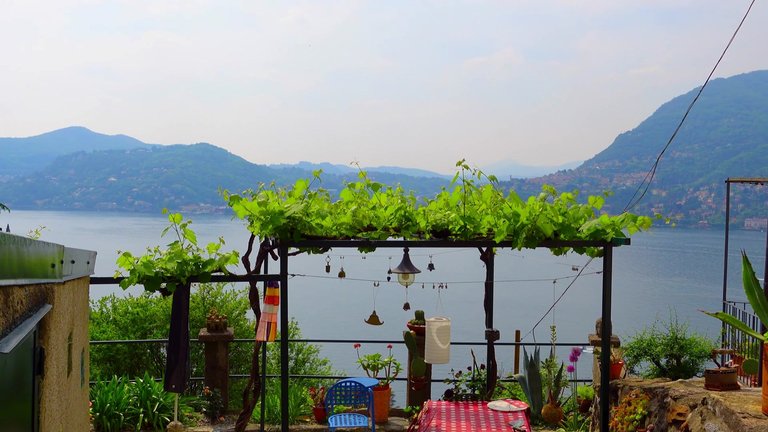
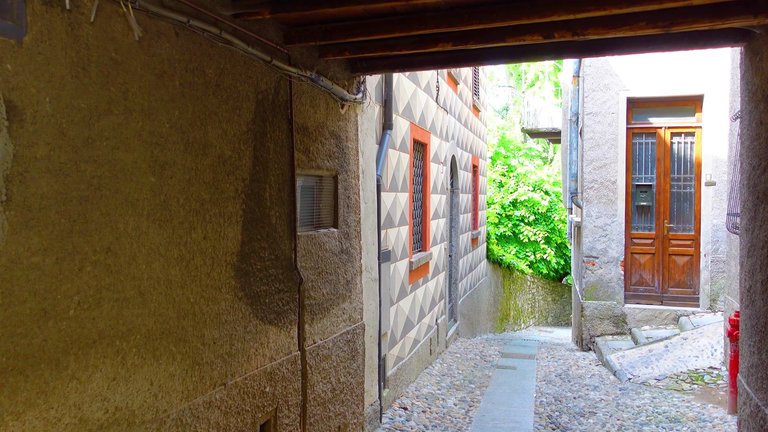
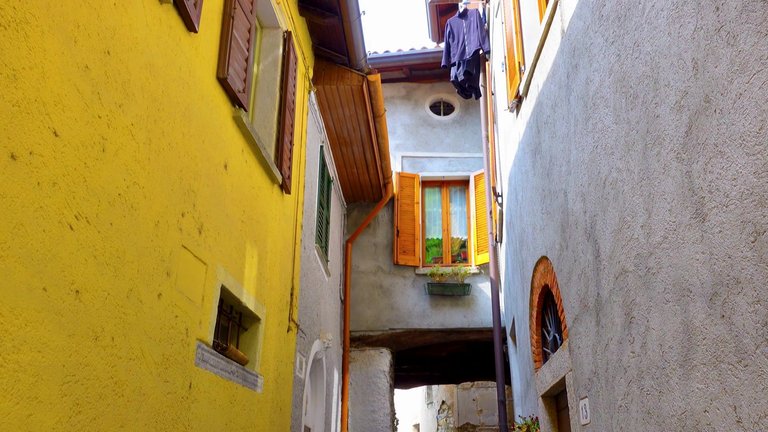
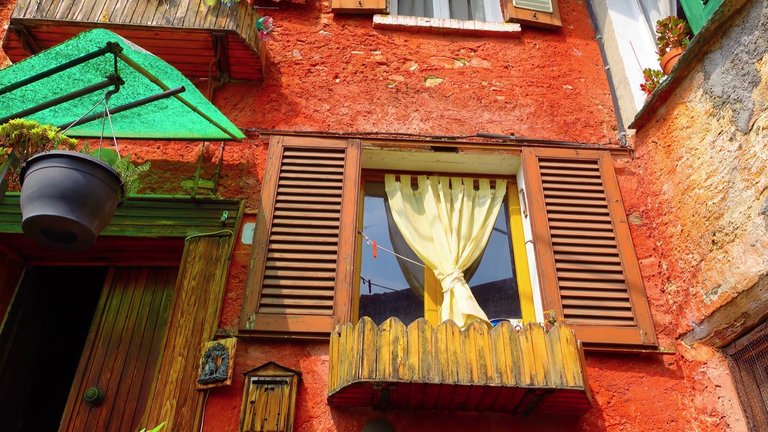
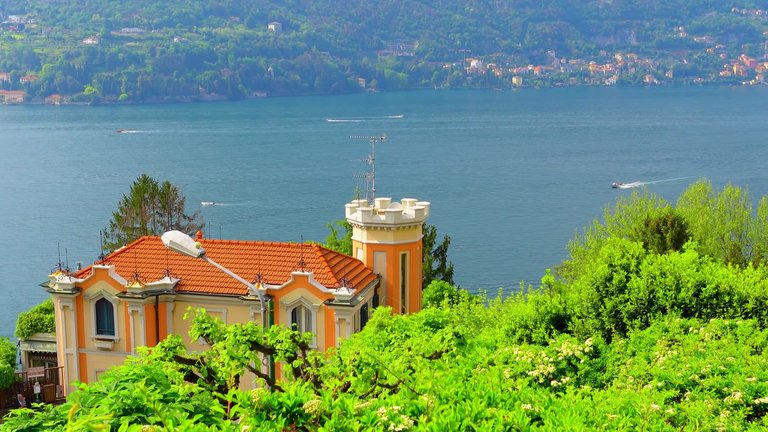
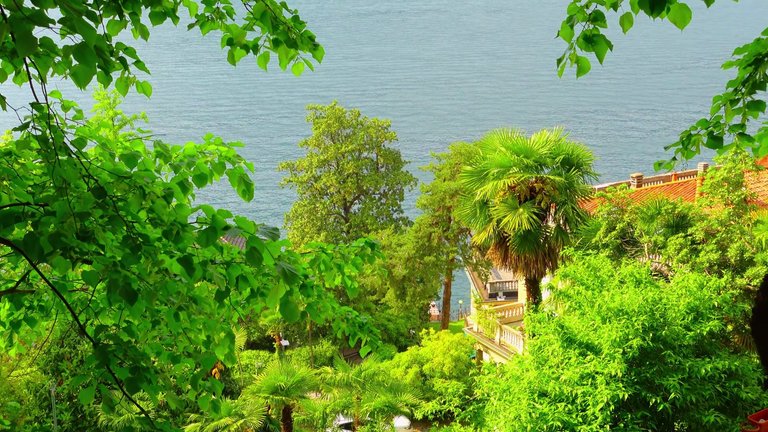
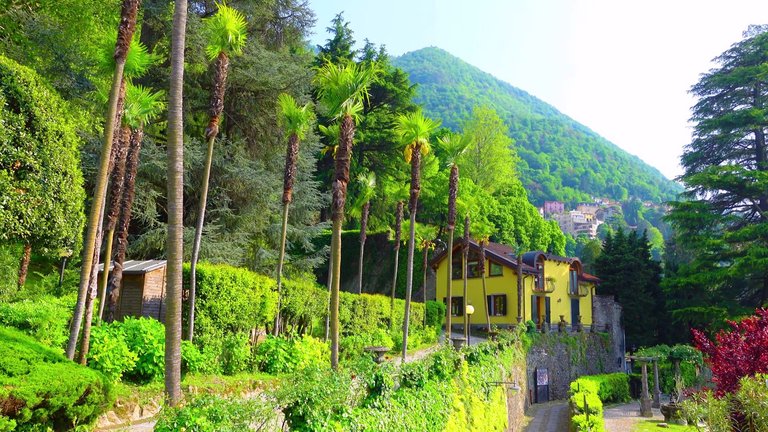
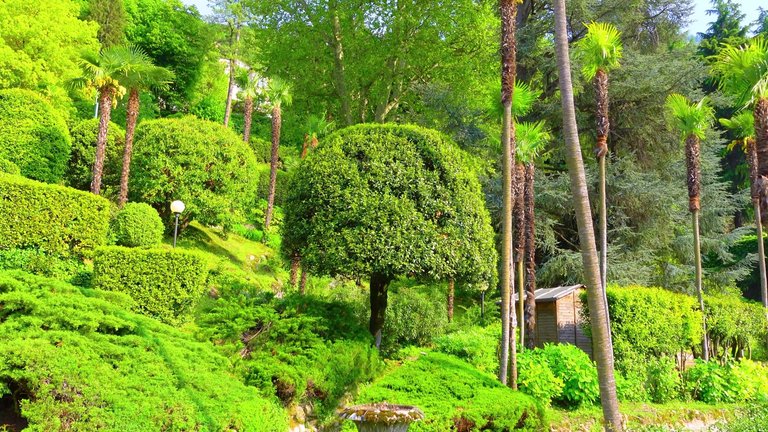
A mosaic park was opened in Blevio in 2015. It’s more of a collective folk art project, with local art school students contributing alongside renowned artists. New works are added every year.
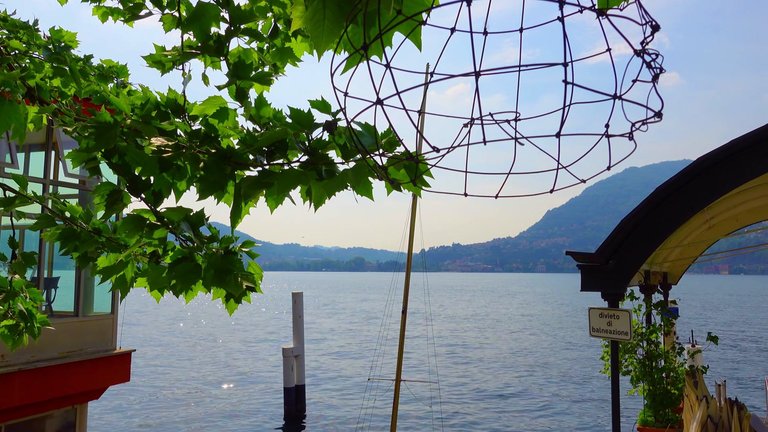
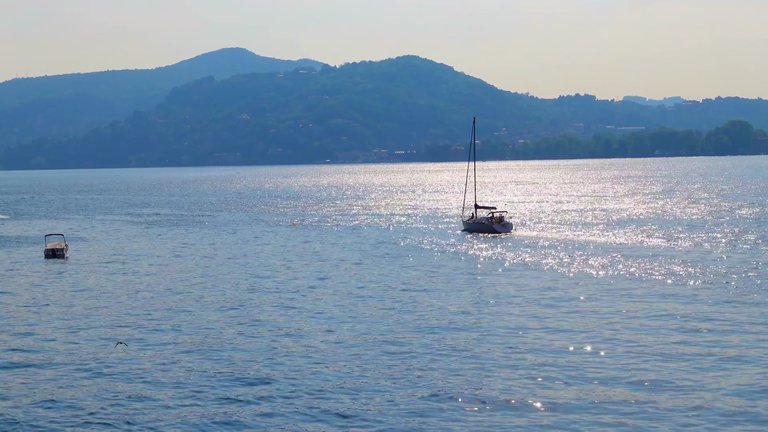
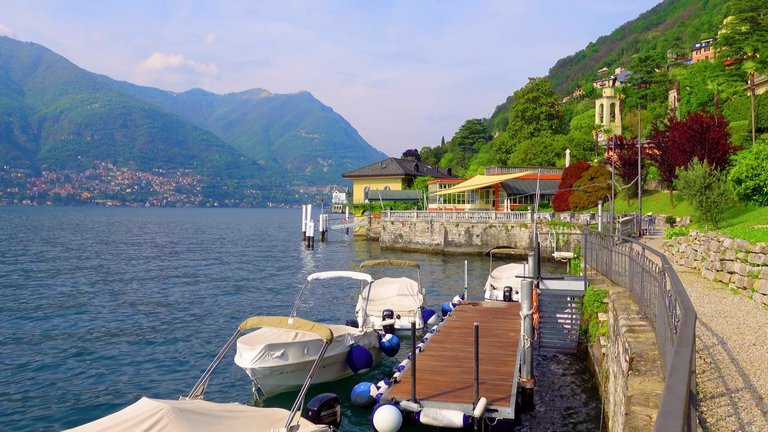
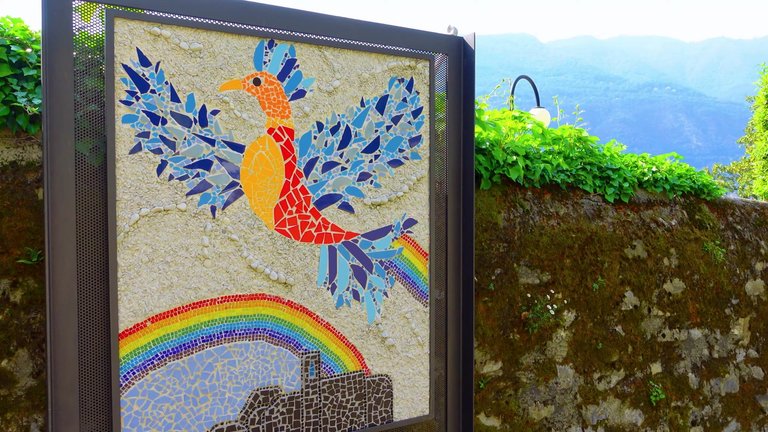
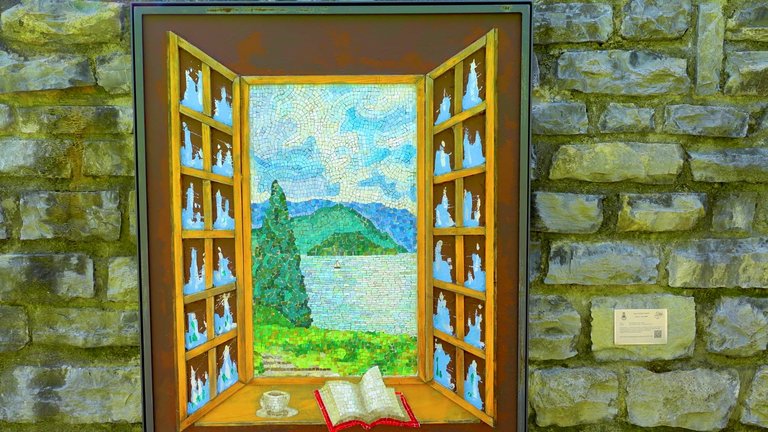
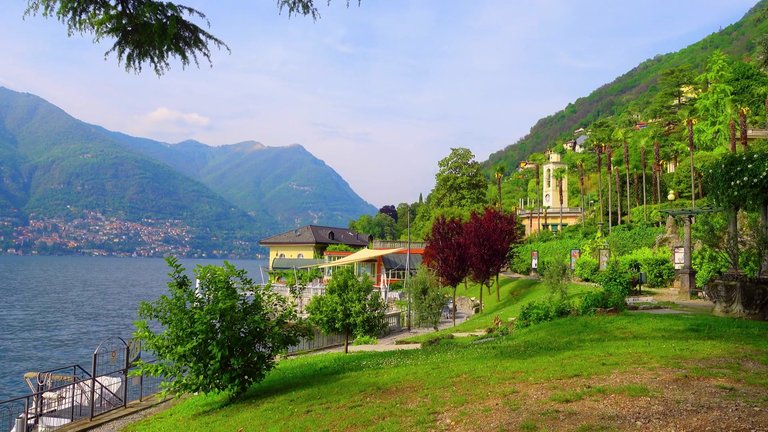
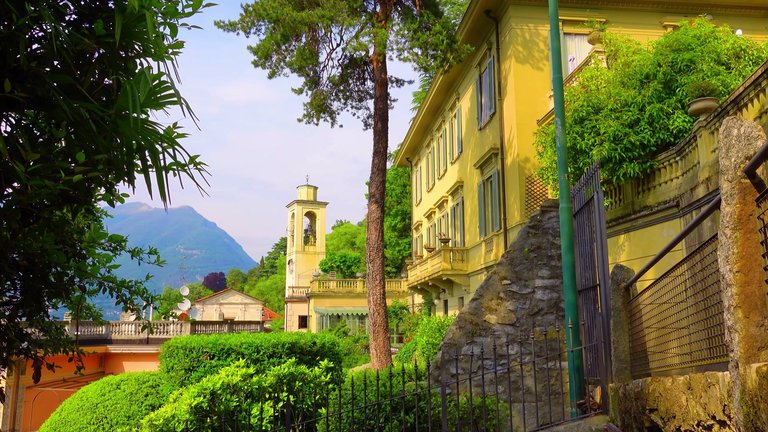
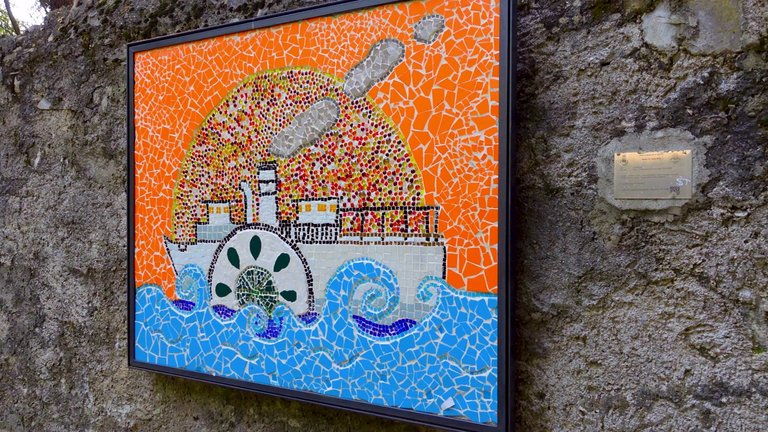
This restaurant near the lake invites you to sit at its tables and sample its typical fish dishes. Fish from Lake Como have been cooked here for centuries in every imaginable way: fried, boiled, smoked or dried, complemented by aromatic spices and fresh olive oil. But it was time for me to leave.
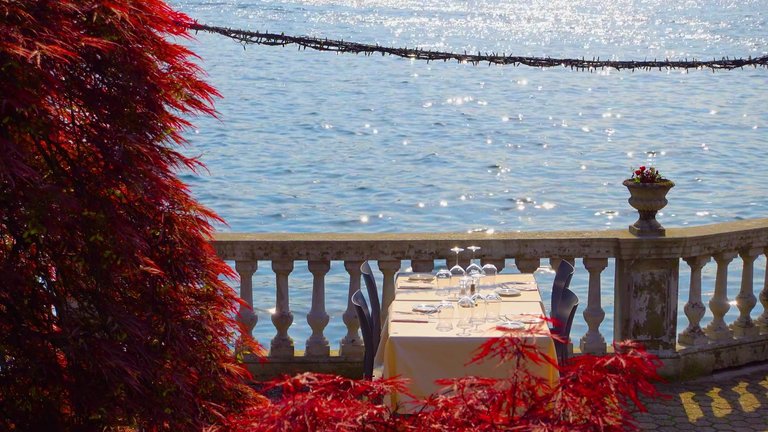
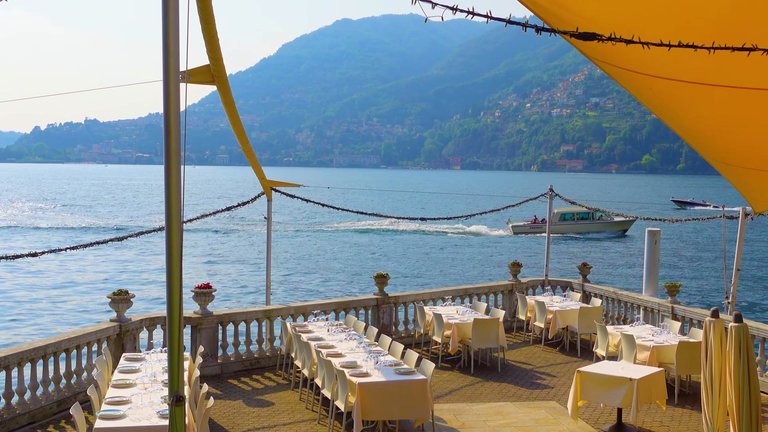
We passed through Maltrase, a region known for its famous villas, beautiful gardens and old stone quarries. The stones of Maltrase have long been a source of pride for local artisans, used in the construction of churches, grand villas and countless buildings.
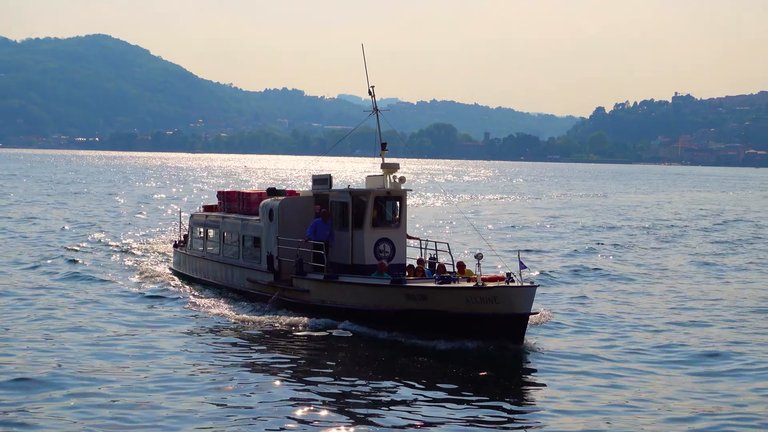
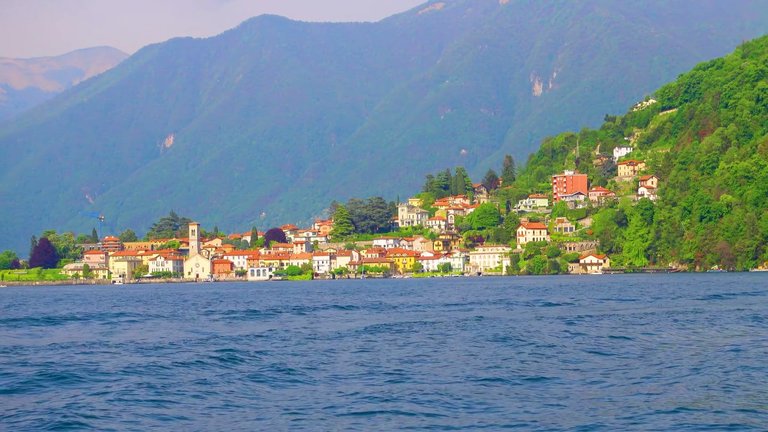
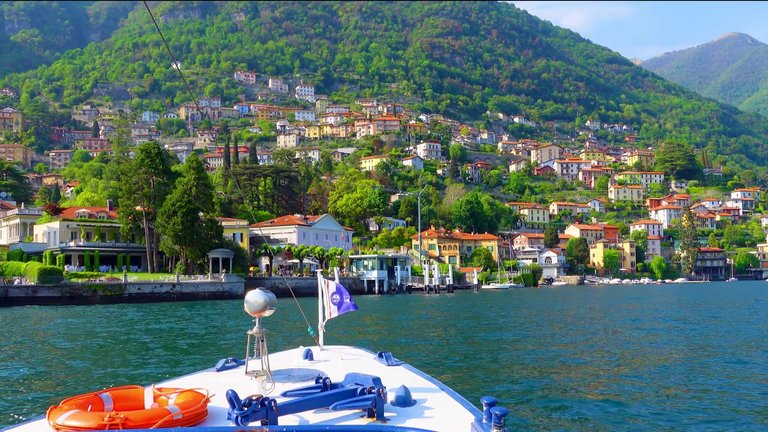
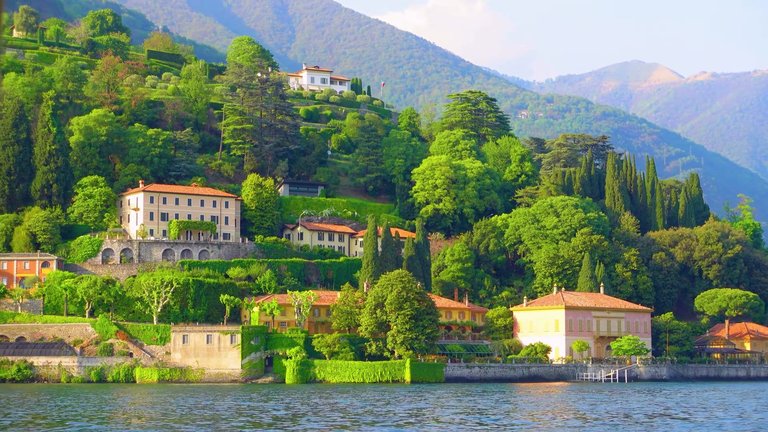
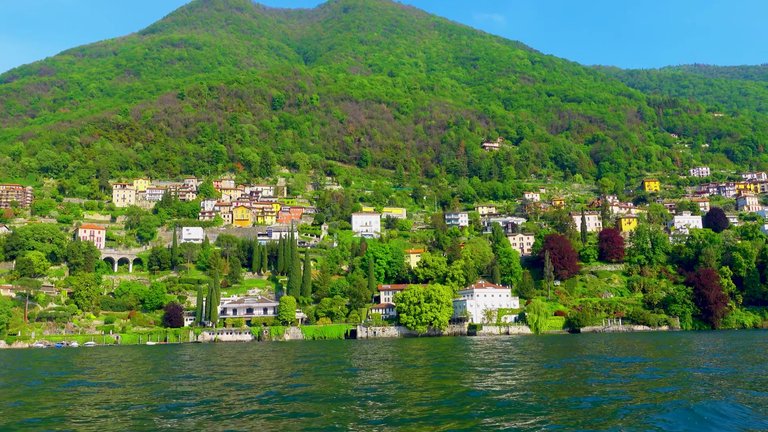
A short trip later the town of Torno came into view. Situated on a rocky peninsula, Torno became a center for woolen garment production between the 13th and 16th centuries. It was a prosperous city, with a population of 5.000 surpassing even Como. Near the harbor in a small area, you can see ships approaching the port.
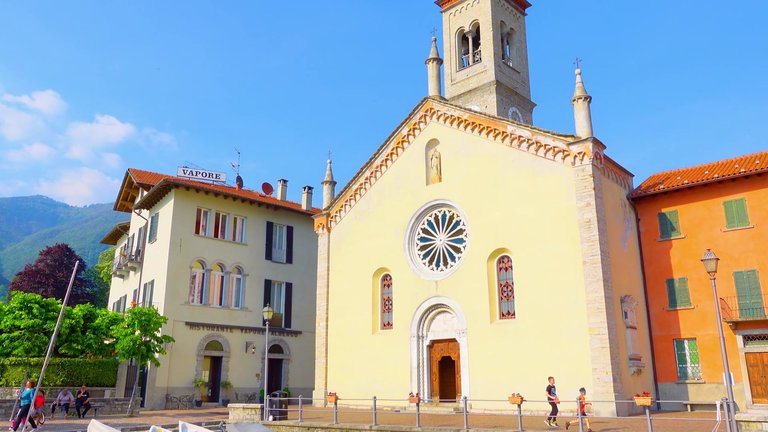
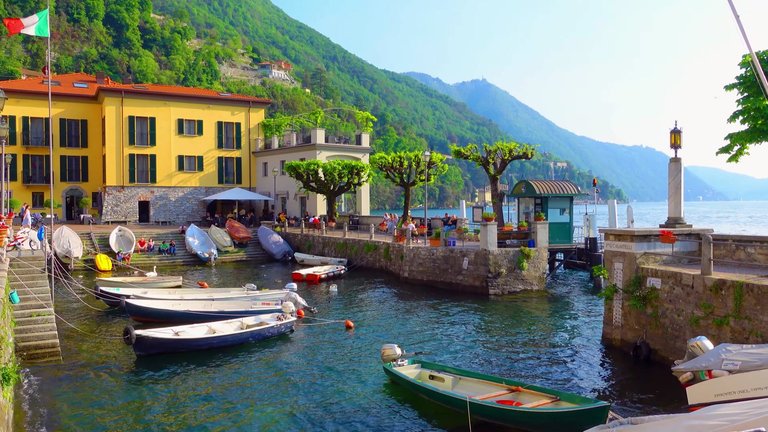
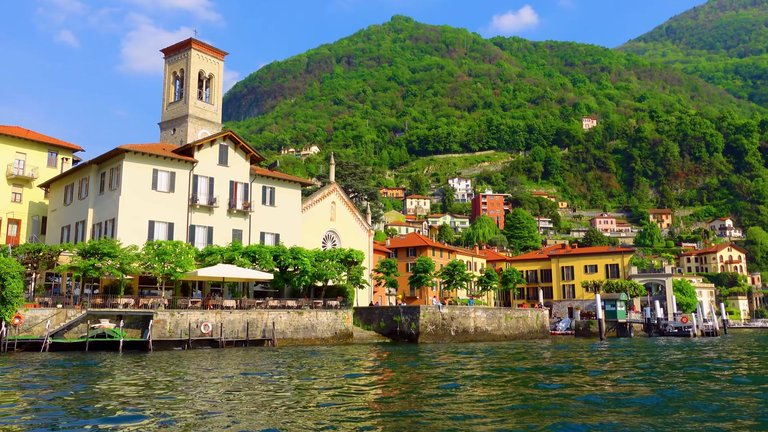
In this modern Italian town accompanied by the sound of waves, my little journey comes to an end.
This is a fantastic post! You really covered a lot with your text and shots.
Thank you so much! I appreciate the kind words. 😍
You can check out this post and your own profile on the map. Be part of the Worldmappin Community and join our Discord Channel to get in touch with other travelers, ask questions or just be updated on our latest features.
Congratulations @annativa! You have completed the following achievement on the Hive blockchain And have been rewarded with New badge(s)
Your next target is to reach 200 upvotes.
You can view your badges on your board and compare yourself to others in the Ranking
If you no longer want to receive notifications, reply to this comment with the word
STOP